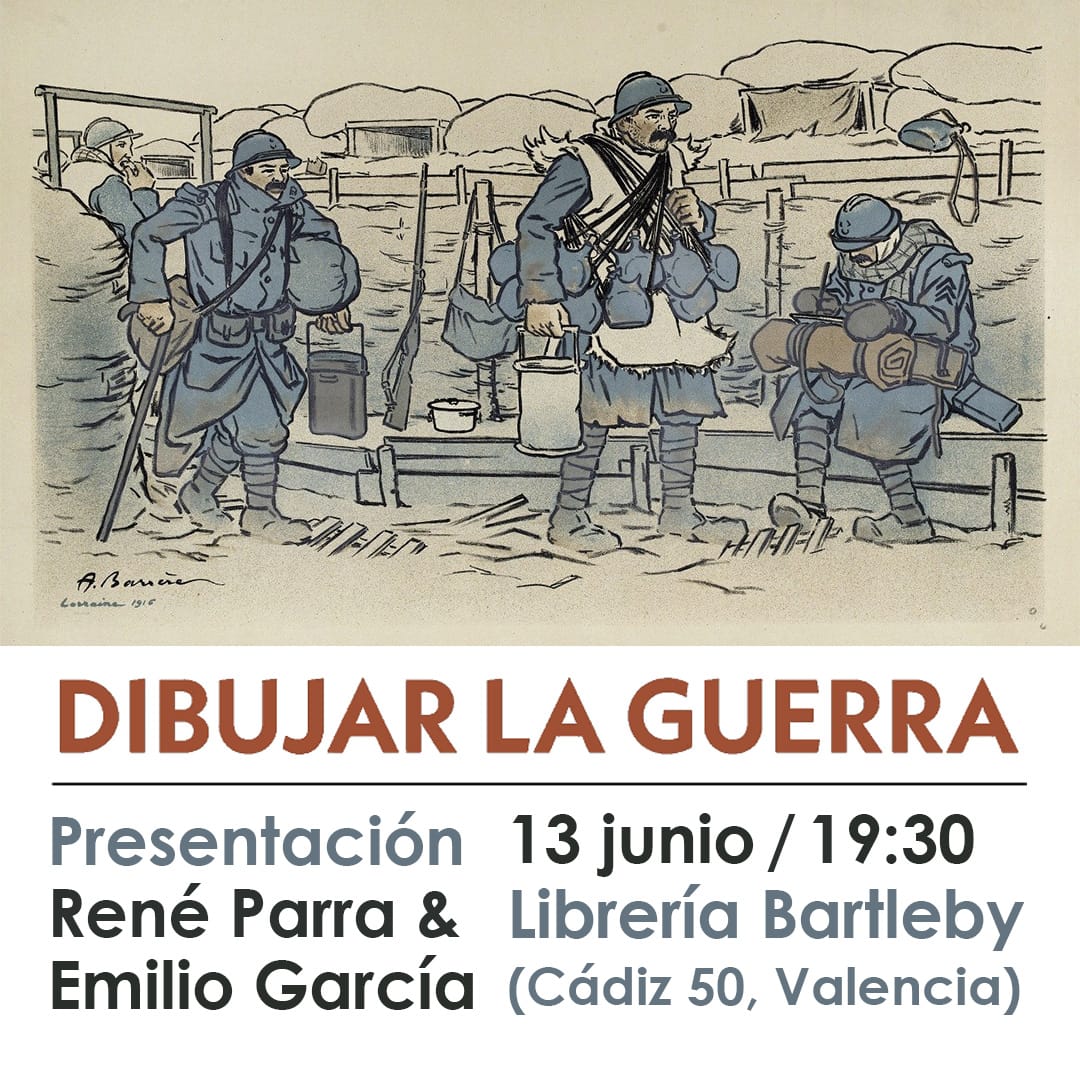Next Thursday 13 June at 19.30 h, the writer, dibujante y editor René Parra presentará su libro Draw the war. Art in the trenches (1914-1918) (Ed. El Nadir) acompañado por el bibliotecario y divulgador Emilio García.
SYNOPSIS
For its qualities of immediacy and lightness, Drawing is an ideal means of artistic expression in a context of war.. During the First World War, many combatant artists produced numerous sketches, illustrations and vignettes about his war experience and the reality of the trenches. Adopting a transversal approach—from avant-garde innovations to satirical press—, This short essay analyzes their different approaches to the conflict, reproducing some of those most notable works. To what extent was it possible to grasp the dehumanization of modern war, denounce propaganda manipulations, capture the horror?
When they tried to draw on the front line, The working conditions of these artist-soldiers were extremely difficult. in the trenches, often, The most pressing thing was to keep the drawing paper dry. Among British artists, Arthur Bradbury would remember the trenches of the Somme, full of mud up to the waist: although he kept his sketchbook safely in his backpack, In such conditions it was often impossible to draw; for his part, Lieutenant Colonel Frank Palmer, young architect, He carried his notebook hidden in his tunic "like a shell". The cold was also a problem: The artist Paul Maze mentions in his memoirs how during the terrible winter of 1916-1917 painting was impossible, since his watercolor brush would freeze before he could even use it…





